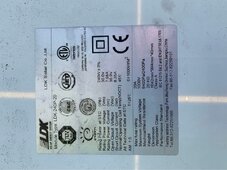A quick pen & paper analysis suggests having at least 2X the watts of panels as your load. Since Tier-1 charging is 12A at 120VAC, that works out to 1440W. 2X of that is 2880W of solar. So, you'd need about double of what you have right now to even get started.
Where would these panels be going? Roof, ground mounts, how far away from your electronics/battery bank? A typical 30Vmp panel will put out ~40Voc at freezing, so you could safely wire three of those panels in series for a 150V limit controller. So, unless you plan on getting a high voltage controller, plan on sticking with 3S (that means three in series).
I tend to favor single-pole ground mounts, and my most recent V5.0 design holds six panels of the size you have. At 90V, you can position a 3S array up to 100' away from your battery with less than 2% voltage drop with standard 10 gauge wire. With two series strings per array, and rotating your arrays East to West over the course of the day, you'll be able to charge the EV at level one at least 8-9 hours per day.
A 48V system is likely to be the most efficient. With 2880W of solar, assuming battery charging starts at ~ 50V, then the theoretical max you'll see going out of the controller is 2880W/50V = 57.6amps. In the real-world, that's more likely to be 49-52A. A 60A controller will fit in here. MorningStar, Outback, Schneider, and Victron all make 150V controllers in this amp range. You might also look at Epever's Tracer 60A.
View attachment 204830
The 2X rule also applies to inverters. If you need to supply ~1500W load (the EV), then get at least a 3000W inverter. I'm partial to Schneider products, and their Conext 4048 might meet your needs well. I personally have their 4024 for my workshop. It has excellent surge capacity, has a built-in generator connection, and is split-phase 120V/240V, so you might be able to ratchet EV charging up to tier-2 if you can limit charging to <10A. But, also look at the Outback and Victron products. I think for most of them, their smaller inverters need to be paralleled to get split-phase 240VAC?
If the primary goal is going to be EV charging, then your battery bank is not likely to need to be that big. A series string of eight 6V golf-carts will likely be fine to stabilize your system. CostCo has them for ~110$ now. If you want whole-house power 24/7 instead of just EV charging, maybe a battery twice that size would be appropriate.




